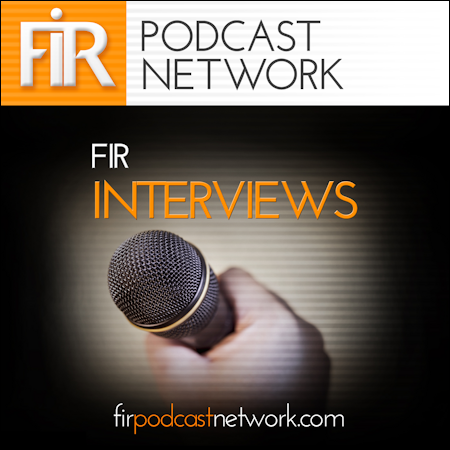Here are two ideas about advertising – online and offline – that could catch on in a big way and ‘evolutionize’ entire industries.
Social news and entertainment site Reddit plans to let users vote on the ads they see when using the website, voting up those they like and down those they don’t:
[…] Our primary goal is to make advertisements on reddit as useful and non-intrusive as possible. We take great pride in the fact that reddit is one of the few sites where people actively disable ad blockers. reddit does not allow animated or visually distracting ads, and whenever possible, we try to use ads as a force of good in our communities.
[…] If you dislike a particular ad in the sidebar, it is now possible to hide it from showing again. If you hover over a sidebar ad in /r/sports, a new “thumbs up” / “thumbs down” overlay will appear. If you “thumbs down” an ad, we won’t display it to you again, and you can give us feedback to improve the quality of reddit ads in the future.
 It’s a very interesting idea. Imagine it across the web. The obvious advantage to website users are immediate and highly appealing.
It’s a very interesting idea. Imagine it across the web. The obvious advantage to website users are immediate and highly appealing.
Imagine – with a single click, you can dismiss the ad you just don’t like. Imagine getting rid of that irritating video ad that start playing as soon as you land on a website, aggressively taking over your screen unasked, and shoving an audio-visual message right in your face. Gone! For ever! Well, at least on the computer where the cookie will be stored (next evolution: save your like/dislike preferences so they’re known no matter what device you use).
There’s also the clear advantage to a brand and advertiser when you like their ad and vote it up.
Imagine – instead of creating online video, banner and other ads aimed to broadcast messages to mass audiences, you create ads that are designed to be interacted with from a recommendation perspective, widening their reach via virtual word of mouth. Imagine seeing an ad that has something on or connected to it that you can see showing how many or who among your friends liked it.
It will do wonders for measuring advertising effectiveness and the value of the data, big or small, that emerges from such an approach.
Then there’s the idea floated at the Advertising Week Europe conference last week suggesting that all you need for a TV spot is five seconds. Not 30 or 60, just 5.
Ad director Trevor Beattie says modern technology has killed the 30-second TV commercial:
[…] Beattie has introduced what he referred to as the “five-second rule”, that in the modern technology age of Facebook, YouTube and Twitter consumers have become much quicker at analysing messages.
“30 second [TV ads] are ridiculously long, it is a lifetime,” he said. “People know within two seconds if they like something. The absorption of information is so fast these days it is amazing.”
It’s an equally-interesting idea – one that Joseph Jaffe would appreciate – although not one that met with wide or warm approval among the audience for Beattie’s talk , as the Guardian’s report notes.
Yet are we not already on the road to five-second video ads with the advent of Vine, a video tool for the iPhone that lets you create six-second videos and share them online via Twitter? Individuals have embraced them warmly – as have brands.
Something like Vine isn’t a universal replacement for traditional TV ads, not yet anyway. But as an additional tool in the ad man’s armoury, it surely can have a place.
Behaviour shifts that are in parallel with the technology developments that Beattie talks about are a huge part of how and why the ad landscape is already evolving and will pick up a stronger evolutionary pace.
The Financial Times reports on a new demographic group – dubbed ‘Generation C’ by researchers at Google because they thrive on four ‘C’s: connection, creation, community and curation – which has taken up permanent residence on YouTube, making the site one of their primary daily destinations:
[…] Generation C is defined not by its age but by so-called “connected behaviour” – constantly switching between devices, thriving on the community around them and finding the content they want to consume. They tend to be in the 18-34 age group and inhabit a multi-screen world of smartphones, tablets and PCs – 67 per cent watch YouTube on two devices or more, Google found.
Advertisers have taken notice of YouTube’s phenomenal rise. Audience size is key to attracting advertisement dollars from companies looking to extend their marketing reach. Nielsen Research Group says Generation C could influence $500bn of spending a year in the US.
 If you watch videos on YouTube at all, you’ll notice many come with ads at the beginning (known as ‘pre roll‘ in the ad business). In some cases, you are able to click a link on the video to skip the ad after five seconds or so.
If you watch videos on YouTube at all, you’ll notice many come with ads at the beginning (known as ‘pre roll‘ in the ad business). In some cases, you are able to click a link on the video to skip the ad after five seconds or so.
As an advertiser, then, you’ve got five seconds to include your key message so that at least the YouTube viewer sees your USP before he or she clicks away to get at the content they actually want to see.
In a sense, then, aren’t we already at the moment of the five-second video ad?
It seems to me that we are poised on the edge of a New Wave of communication that blurs traditional boundaries and makes little sense of traditional hierarchies and silos that we currently call advertising, marketing and public relations. Bits and bobs of this New Wave are already popping up here and there as actual experiments and compelling ideas.
It’s a serious business and the stakes are huge, as the numbers the FT talks about clearly indicate.
Related posts:












17 responses to “The dawn of the valuable-ad era”
The dawn of the valuable-ad era: Here are two ideas about advertising – online and offline – that could catch on… http://t.co/ZXeIaPe70l
RT @jangles: The dawn of the valuable-ad era: Here are two ideas about advertising – online and offline – that could catch on… http:// …
The dawn of the valuable-ad era http://t.co/8P6oS63esG
The dawn of the valuable-ad era http://t.co/68H51TdkzU
The dawn of the valuable-ad era http://t.co/gUMAPxNPy4
Lynette Young liked this on Facebook.
Hobson: The dawn of the valuable-ad era: Here are two ideas about advertising – online and offline – that coul… http://t.co/IYrkbVGjkO
The dawn of the valuable-ad era: http://t.co/1plnOHqTGL via @jangles #ads #advertising #socialmedia
There is an interesting evolution taking place. It is this idea of being ‘of the Cloud’. The step change is that we expect the internet to be useful all the time.
When last did you go into a restaurant or pub where no one pulled out a mobile device?
It is not unusual for someone to re-purpose content and send it on its way during a social conversation.
An event that takes 30 seconds to process in such an environment is just plain rude. In another context it may have a role but it will be a diminishing one.
The use of the Cloud is now so significant that we urgently need more research because its use, application and potential to change social habits is becoming very significant.
Hey! I even find that I need to plug my tablet into the TV several times a week to get the best results from my use of it – how Cloudy is that!
[…] Here are two ideas about advertising – online and offline – that could catch on in a big way and ‘evolutionize’ entire industries. […]
The dawn of the valuable-ad era via @jangles http://t.co/u7xZijBBW0
RT @allanschoenberg: The dawn of the valuable-ad era via @jangles http://t.co/u7xZijBBW0
[Blog post] The dawn of the valuable-ad era http://t.co/QUBZOdmgyO
The dawn of the valuable-ad era: http://t.co/z6vShDyPV2 via @jangles
[…] can’t see ideas like these as long-term survivors. Unlike some crazy-sounding ideas such as the 5-second spot. Now that one will be a […]
[…] The dawn of the valuable-ad era […]
[…] maybe Facebook just changed the game, never mind upped it. And maybe 15, not 6 (and maybe not even 5), is the new 30 […]